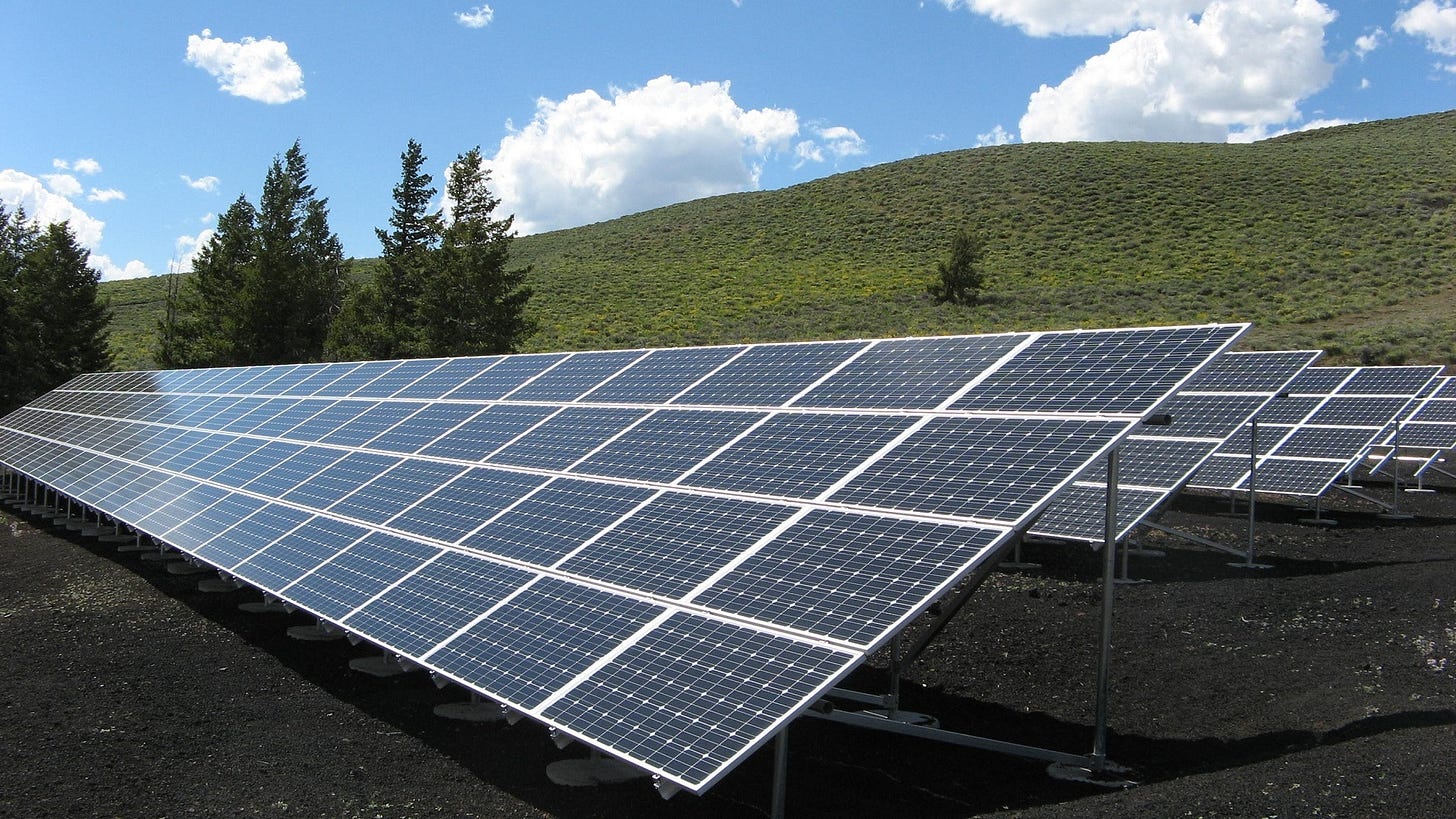Because one size—or action—does not fit all, today’s newsletter offers a small smorgasbord of actions.
As I mentioned on Day 6, in the US, heating, cooling and powering our homes generate about 20 percent of the country’s greenhouse gas emissions. Switching to clean energy sources to run our homes can drastically reduce those emissions. And making the switch may be simpler than you think.
Purchase renewable electricity
If you live in the US, choosing renewable energy sources for your household electricity may be a money-saving click or two away. According to Energy.gov, at least half of all utility customers in the US can now buy renewable energy for their homes through their power supplier.
To make the switch, log into your account with your utility company and switch to green electricity if your provider offers it. If you have trouble finding information on your utility’s website, call and ask for help. Or do an online search with the terms “switch electricity to clean energy [YOUR CITY].”
We buy our electricity from the public, not-for-profit agency Silicon Valley Clean Energy (SVCE), and PG&E, our utility, delivers it to our home via the grid. SVCE provides 270,000 residential and business customers with clean electricity in 13 communities in the valley, and has invested $1.6 billion in renewable energy projects. If you live in the area that SVCE serves, you buy your energy from it by default. (Customers can opt out but they’ll pay more.)
You do not have to own your home to make the switch. If you rent an apartment in a complex, with each unit metered individually, you can switch. If your entire complex shares one meter, ask your landlord about making the switch.
Search for a community solar project
If your utility doesn’t offer the option to buy clean energy, you may be able to participate in a community solar project, sometimes called a solar garden or shared solar. Members of the community—residents, businesses and not-for-profit organizations, for example—subscribe to shares of the energy generated by a centrally located solar array. They then receive a credit to offset their electricity bill, based on the size of their share. Go here to search for community solar in the US.
Community solar has taken off more slowly in Canada, with the country’s first community solar project launched in BC in 2017. Nova Scotia recently completed its first solar garden and began to accept subscribers. Check out Bullfrog Power for more community-based green energy projects in Canada.
Help more people go solar
GRID Alternatives is the largest nonprofit installer of clean energy technologies in the US. It makes solar more accessible to low-income communities on the front lines of climate change in California, Colorado, the Mid-Atlantic region and tribal communities nationwide. GRID also trains thousands of people for clean energy jobs. Go here to find out if you or someone you know qualifies for no-cost solar. Or go here to support GRID’s work.
Install solar panels on your home
Okay, this will require some effort, research—and cash upfront. However, prices for solar installations have dropped and eventually solar panels do pay for themselves. They may also increase the value of your home.
As with many other big purchases, to get started, ask your friends and family for referrals for solar installers, then ask a few companies for quotes. In the US, you can also start with EnergySage, an online marketplace for solar. After you add your property and energy usage to the website, you’ll receive quotes from pre-screened installers. It’s like Tinder for homeowners looking for solar panels.
If you find your dream installer and commit to rooftop solar panels for your home, you may be the source of a solar contagion in your neighborhood! Several studies have shown that when a homeowner installs solar panels, neighbors have a higher chance of installing them as well.
I hope you’ve been enjoying this challenge! Will you make a switch to renewables? Does any of your home’s energy currently come from renewables? What has been your experience?





I did not know about these options! I'm definitely going to explore whether we are already receiving green energy or need to make the switch. Thanks for the very informative article!
Solar energy uses less fossil fuels than burning fossil fuels directly, but isn't clean. Making, transporting, and installing them all require fossil fuels (wind too). They require mining non-renewable resources. Plus disposal is already a big issue and growing.
Solar, wind, and nuclear are cleaner than coal, but not clean. They're more like methadone: still a serious drug and helpful to kick an addiction for someone seriously intending to quit an addiction, but still a serious drug. Nothing competes with reducing consumption.